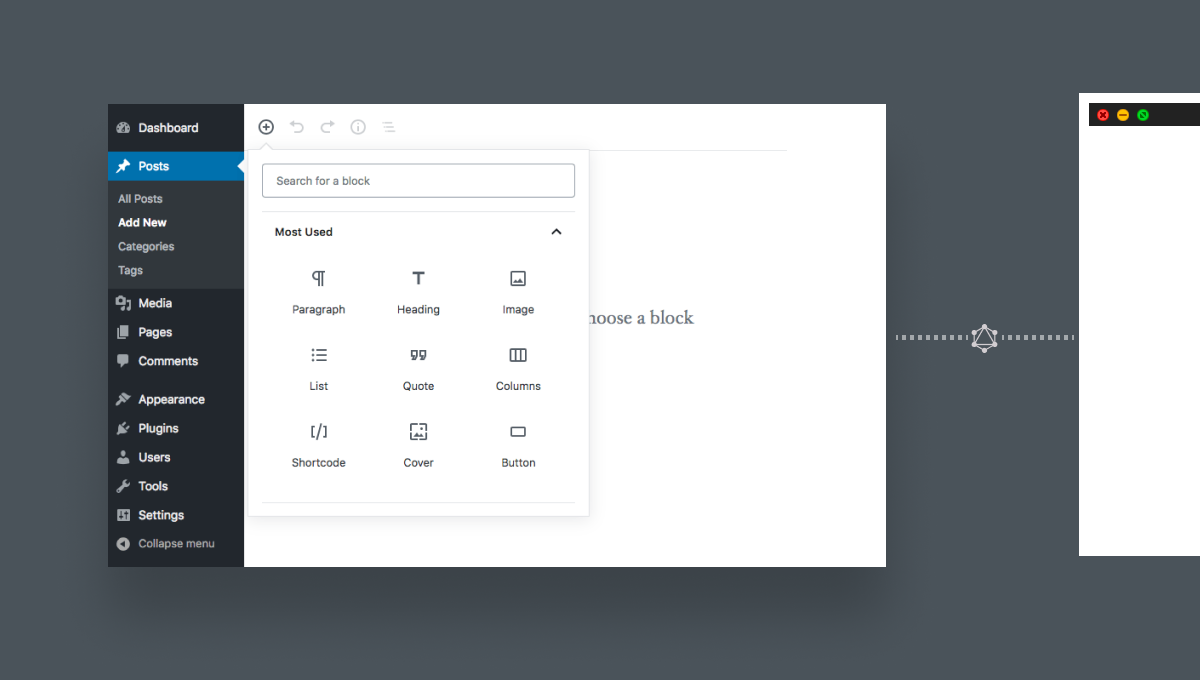Decoupled Approach with Headless WordPress

What is decoupled WordPress?
When you are referring to WordPress CMS, you traditionally mean a fully-featured Content Management System based on a monolithic structure that directly renders the user experience of the website in a browser.
A decoupled WordPress like other decoupled CMSs is consisting of a separate front end giving a different user experience, delivering the content from the respective CMS by using APIs. Since WordPress in this case is used just as a back-end and hosting the APIs and back and front ends are “decoupled,” the user interface can be developed and built using any other technology stack like JavaScript.
What is the structure of Decoupled CMS?
The phrase "headless" is a little gruesome for all the stakeholders of WordPress, so we choose to use the term "decoupled". (We also believe that WordPress has a head, a heart, a brain, and everything else you'd expect in this metaphor in any configuration.) WordPress generates well-formed JSON feeds of data and content in this configuration, which can be consumed and displayed.
Publishers, whose websites consume content from WordPress JSON feeds into native mobile apps and other user interfaces that aren't inherently traditional websites, have often used WordPress in a decoupled state. WordPress powers a diverse range of user interfaces, from common iPhone applications for news organizations to hotel digital signage networks.
The architecture of Decoupled WordPress
In the traditional form of WordPress, it is generally referred to as “monolithic” as compared to “microservice”. The WordPress themes embrace templates to manage the display of content on the user interface or front-end.
Content production, a templating engine, third-party integrations, even style, and user experience, all are available in one platform. In fact, the nature of traditional WordPress is one in all the explanations it’s utilized by most websites.
In a decoupled or microservice architecture, WordPress is separated from the templating engine, design, and user interface. It is free to use JavaScript frameworks and libraries like ReactJS, Vue.JS that can be built in modern designs with all the trending features to build the front-end of the websites.
Today, several developers build templates with JavaScript, ingesting knowledge and content from WordPress. ReactJS is a Javascript library originally developed by Facebook that has become a very standard front-end resolution for decoupled WordPress design.
What are the benefits of decoupled WordPress?
Control and Scalability
Greater management after you decouple WordPress, you gain nearly endless management from a development stance. Front-end developers will get inventive with dynamic uses of JavaScript, Content writers and back-end management will deliver an ‘outside the template’ expertise.
Scalability increases after you develop a headless system, you'll scale it up very quickly. Your content will still build, associated since you're currently an API-first look, you'll answer new user desires during a snap.
Enhanced Security
Decoupled and headless approaches minimize the risk of losing your content. Since your content and database is available away from your front-end delivery, it's not as exposed or in danger to a third-party application, SQL injections, and malicious hacking.
The removal of CMS application overhead from each web server increases content delivery efficiency, which is critical because the speed at which your website content loads has a direct impact. A decoupled CMS also helps you to scale and prevent database bottlenecks that a conventional CMS is likely to cause.
Speed with style
Decoupled WordPress is lightweight as the frontend style is being maintained on a separate platform. After you go headless, you shed the weight of DB and plugins from the user interface. Since your system currently consists of simply content information and API calls, your content delivery is responsive, sleek, and fast.
Using a decoupled approach allows you to give your developers the opportunity to experiment with new frameworks and techniques in order to stay on top of technology trends. A developer may want to experiment with any of a dozen modern frameworks, such as the React library for designing user interfaces, Redux for state monitoring, and Google's AMP or Polymer tools for mobile applications.
Is Decoupled WordPress different from Headless WordPress?
The term decoupled and headless are often used interchangeably, however, the question arises can a decoupled CMS an equivalent to a headless CMS? The headless and decoupled CMS both have content management, a database, and deliver content through an interface, usually stated as REST APIs.
However, there's a small difference between a decoupled CMS and a headless CMS like headless wordpress. A headless CMS doesn't have a front-end system or presentation layer. A headless CMS is API-first, which implies content management tools that are integrated via API. Separating the information from content permits you to publish content to any device or channel, like a website, a smartphone, a smartwatch, or any device connected to the Internet of Things.